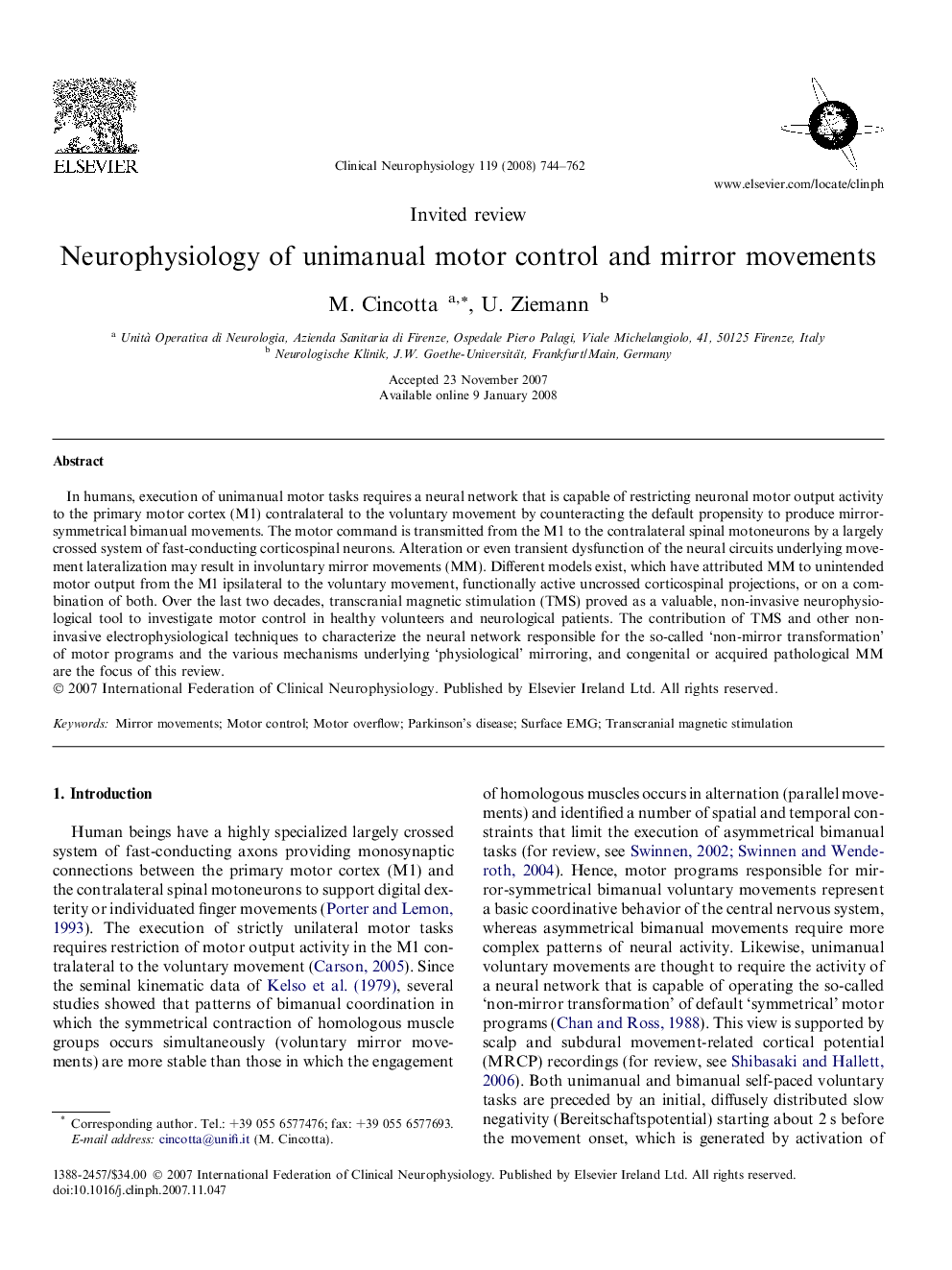| Article ID | Journal | Published Year | Pages | File Type |
|---|---|---|---|---|
| 3046488 | Clinical Neurophysiology | 2008 | 19 Pages |
In humans, execution of unimanual motor tasks requires a neural network that is capable of restricting neuronal motor output activity to the primary motor cortex (M1) contralateral to the voluntary movement by counteracting the default propensity to produce mirror-symmetrical bimanual movements. The motor command is transmitted from the M1 to the contralateral spinal motoneurons by a largely crossed system of fast-conducting corticospinal neurons. Alteration or even transient dysfunction of the neural circuits underlying movement lateralization may result in involuntary mirror movements (MM). Different models exist, which have attributed MM to unintended motor output from the M1 ipsilateral to the voluntary movement, functionally active uncrossed corticospinal projections, or on a combination of both. Over the last two decades, transcranial magnetic stimulation (TMS) proved as a valuable, non-invasive neurophysiological tool to investigate motor control in healthy volunteers and neurological patients. The contribution of TMS and other non-invasive electrophysiological techniques to characterize the neural network responsible for the so-called ‘non-mirror transformation’ of motor programs and the various mechanisms underlying ‘physiological’ mirroring, and congenital or acquired pathological MM are the focus of this review.
